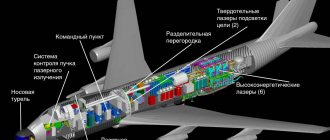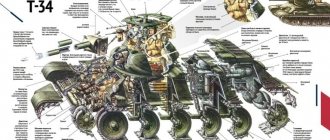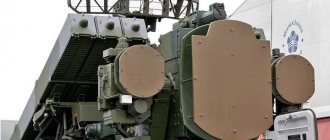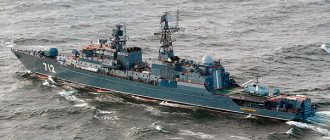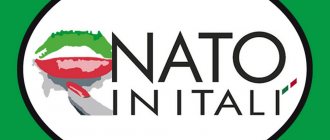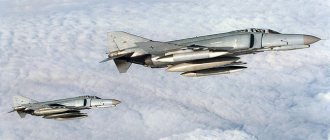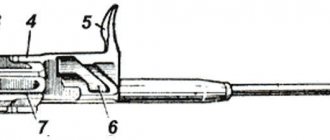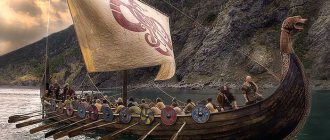Having gone through a huge number of battles in its history, humanity has long been preoccupied with the need to create clothing with natural colors for the best camouflage. Such clothing that would be comfortable for a fighter and could be used to reduce the visibility of people, weapons or even military equipment. And this coloring was invented. From the first days, camouflage was created precisely as a special coloring that maximally camouflages a soldier in the environment. Now there are many camouflage colors known, and each of them is created for a specific landscape and time of year. In addition, the armed forces of different countries have different camouflages. Below are the ten most famous colors in the world.
Flektarn (Germany)
This camouflage was developed in the 1970s. It was first demonstrated at joint Franco-German exercises in 1976. However, it was accepted for supply only in 1989.
The developers of Flektarna combined the incompatible: they managed to resolve the contradiction between the deforming and imitation functions by combining small (imitation function) spots into large groups of spots (deforming function).
Lizard (France)
The first post-war French camouflage pattern, "Lizard", was created in the 1950s. Initially, it was equipped with military personnel of special units, but then it became army-wide.
Based on the Lizard, all tiger-colored camouflages were developed, from the famous Philippine Tiger Stripes to the Russian Tiger.
Lizard still supplies the armed forces of a significant number of countries, from Portugal and Greece to Senegal. In France itself, it has been removed from supply, giving way to the SSE. The official Turkish camouflage is also a type of Lizard.
Global distribution of khaki color
After Hudson's resignation, the military forgot about the khaki color for some time. And only half a century later, the British again decided to sew khaki uniforms, when the Anglo-Boer War began. The British army took such a step after huge losses of soldiers from sniper fire from enemy shooters.
Then the Russian army began to use the protective color. After analyzing the results of the Russo-Japanese War, the Russian command was forced to change the uniform of the soldiers from white to swamp.
During the First World War, khaki material was used by the armies of almost all countries of the world. Only the French refused to outfit the soldiers in khaki uniforms, as a result of which they suffered heavy losses. In 1918, the military leaders of France, after much deliberation, finally decided to change their light blue uniforms and multi-colored hats to a marsh-colored field uniform.
From that moment on, the color khaki was associated only with the army.
CCE (Camouflage Centrale Europe), France
Camouflage was created in the 90s. At first glance, it may seem that CCE is a French copy of Woodland. However, there are several differences.
Firstly, in CSE the background spots are not green (as in Woodland), but gray. Secondly, the spots themselves are larger than in Woodland. And thirdly, the spots are “flattened” compared to “Woodland” in the horizontal plane, because the French took into account the rule that when moving, horizontal spots retain their camouflage properties.
Officially a member of the Armed Forces and the Foreign Legion of France, it is not widely distributed around the world.
Soviet Union, Russia
| KZS . 1975-76 Anti-radiation protection mesh camouflage with digital pattern. Currently out of print. The fabric was impregnated with special substances that prevented combustion. A spacious mesh camouflage suit was worn over the uniform. After use, the suit was not reused, but was buried or burned. Scope of application: reconnaissance, army. |
| Oak, butane 1984. Army camouflage . Initially developed for airborne forces and landing forces. Three-color forest camouflage . Currently used in aviation and airborne units. Also used in various modifications for tourist clothing. In many respects it coincides with the American Woodland camouflage pattern. |
| Flora and digital flora (simulating two-color pixel layout). Three-color army camouflage , which replaced the “butane” pattern. Currently in use. Features a more dynamic silhouette. The color is also called “watermelon”. |
| Birch tree , gold leaf, silver leaf , sunbeam, border guard . Legendary camouflage with a pattern that imitates the play of light in foliage. Developed for border troops. Subsequently used in reconnaissance and airborne units. In the West, the pattern is known as “KGB camouflage.” |
| Palma . Camouflage pattern from 1944. Tropical vegetation. Demonstrates the breadth of views of the Soviet leadership. Camouflage was used in reconnaissance and sabotage units of the Second World War. |
| Amoeba . 1935 Two-tone camouflage with an amoeba-like breaking pattern. When moving, the contours of the figure blur, like an amoeba. An interesting visual effect, despite the apparent simplicity of execution. |
| Knight , " reed ". Camouflage developed for special purpose of the Ministry of Internal Affairs Variations of the “tiger” camouflage, which is reflected in the name, which clearly refers to the “Knight in the Tiger Skin”. There are winter and summer options. Can be used both in urban and field conditions. |
| VSR-93 , “vertical”. Combined arms camouflage 1993. |
Modern camouflage of Italy
The Italian army has its own traditions of using camouflage. According to some reports, camouflage uniforms appeared in supply to the Italian Armed Forces back in the 1920s. The Italian Army currently wears the "Vegetata" colorway.
The camouflage was developed in the 2000s and has been in supply since 2007.
The basis for the development was “Woodland”, the spots of which the Italians gave a more broken and pixel-like shape. Therefore, Vegetata is sometimes mistakenly called a “digital Woodland”, although in fact it is not.
What is protective color
This is the general name for flowers that merge with the landscape, nature, and surrounding objects. Objects painted in a protective color remain unnoticed in certain environments.
In some cases, security color refers to the bright color of the entire object or its individual parts, which conveys certain information to the security observer.
Modern camouflages of China
Taking into account the fact that China is the industrial factory of the planet, the range of Chinese camouflages until 2007 will break the devil's leg. The Chinese have produced and continue to produce a huge number of both commercial camouflages and camouflages for their own army.
However, there are several camouflages that are characteristic of the PLA.
For a long time, the Chinese wore their own version of the Woodland, more similar to the Soviet Amoeba. Interestingly, for Marines, one of the colors used in this camouflage was blue.
One of the interesting Chinese developments was a camouflage called “Tibetan Flektarn”. In terms of design, it is almost identical to the German “Flektarn”, but has a different color palette.
This camouflage shows very high efficiency in the highlands, where the gray-brown color scheme dominates. Thanks to this, it is produced in many countries, including the Russian Federation, but is not officially supplied anywhere. At the same time, it is actively worn by PLA soldiers in Tibet.
It was only in 2007 that the Chinese introduced a uniform camouflage pattern for their armed forces. The principle of versatility was realized by choosing gray as the background color, because the color is common both in nature and in urban areas.
On all fronts and on all barricades
The result is a universal color scheme that works at different distances and theaters of war. This was the first and main reason for the wild popularity of camouflage.
In addition, Multicam has simply become fashionable among the military. Elite special forces began to switch to it en masse due to the camouflage qualities of the colors, photographs of fighters in Multicam began to flash on the Internet and, coupled with modern equipment, the image of special forces in comfortable small body armor with patches on their helmets, rifles, hung with tuning, looked very menacing and beautiful. Many military men, captivated by this beauty of the image, joined the fashion and bought and continue to buy Multikam primarily because of its beauty and the camouflage image “which is chosen by the SEALs and Alpha.”
Ultimately, Crye Precision was able to do what no commercial enterprise had ever been able to do before - dress the best soldiers around the world and on all sides of the barricades in its camouflage. So far, their brainchild has no competitors, except for their own development - the young colorway A-TACS FG, the popularity of which is slowly and surely gaining momentum.
Modern camouflage of Denmark
When developing modern camouflage, the Danes did not bother too much, but adapted the German “Flektarn” to their conditions.
The Danes reduced the number of colors to three, and made the colors themselves more faded: instead of light green they used gray, instead of dark green they used olive, and they excluded brown. The camouflage turned out to be ideal for the northern forests of Denmark and even Russia.
Danish Flektarn is the case when camouflage is officially supplied in one country, but is most widespread in another - and specifically in the Russian Federation. Although it is not supplied to the RF Armed Forces, it is nevertheless very common here and is produced by several manufacturers.
Who dressed up as Multicam
In 2010, the Americans dressed their army units in Afghanistan in Multicam, recognizing its advantages over the standard ACU. At the same time, many US special forces have already privately dressed up as Multicam.
The British went even further and adopted a slightly revised version of the Multicam as the color scheme for all armed forces. Georgia did the same. Multikam was worn by the warring units of Australia, the Polish special forces "Thunder", the Ukrainian "Alpha" of the SBU and the Special Forces of the Armed Forces of Ukraine, the British SAS, the American "Green Berets" and a number of other special forces, the French Foreign Legion, the German special forces KSK, the special forces of the Greek Navy and dozens more, if not hundreds of units in Europe and beyond. Last year, Armenian special forces in Multikam fought with Azerbaijani special forces in Multikam in Karabakh. Militias of the Lugansk and Donetsk People's Republics in Multikam (not all of them, he is present there, but not very often) are fighting saboteurs of the Special Forces of the Ukrainian Armed Forces in Multikam. Russian special forces SOF in Multikam are fighting with ISIS (militants of a terrorist organization banned in the Russian Federation) in Multikam. Today, Multicam is found in almost all wars on all sides; in 2022, people all over the world shoot at each other in the same uniform.
© defense.gov
In 2010, the Americans dressed their army units in Afghanistan in Multicam, recognizing its advantages over the standard ACU.
Modern camouflage of Sweden
Modern Swedish camouflage was developed in 1990. When creating it, the Swedes used old German developments: the shape of the M90 spots is very similar to the shape of the Splitttr spots of the 1940s.
The deforming function is achieved by color contrast (as in KZS), as well as by the fact that the connection of polygon faces contributes to the formation of a kind of 3D effect; imitation - selection of shades. Consists of supplies in the Swedish Armed Forces.
Modern camouflage of Switzerland
The last time Switzerland actively fought (as a state) was with Charles of Burgundy, and therefore it has little real experience of combat operations, but its national pride is higher than Mont Blanc. Therefore, the most non-combatant army in Europe could not do without its own camouflage.
The Swiss admire the beauty of the mountains so much in the spring, when all the flora begins to bloom in the alpine meadows, that they could not help but reflect this fact on the uniform of their soldiers.
Actually, if the Chinese are the only ones who use blue in camouflage, then the Swiss are the only ones who use red. The red elements of the design symbolize the red spring flowers with which the Alps are covered during the corresponding period. Apart from Switzerland, this camouflage is not common anywhere else.
How did the protective color of the fabric come about?
The creator of clothing made from swamp-colored fabric is considered to be the Indian tailor Khaki, after whom the camouflage colors were named. He was the first to sew uniforms for English soldiers from material the color of swamp mud.
According to historical documents, the khaki uniform was custom-made by the English Major Hudson, who was fond of drawing before the army. In 1848 he commanded a battalion of scouts in India. At that time, soldiers wore red uniforms. Naturally, uniforms of this color were an excellent target for bandits and enemies. Even from a great distance it was easy to see the soldiers in red uniforms.
A major with creative abilities solved this problem with a non-standard solution - he dressed the soldiers in nondescript costumes, completely invisible against the background of nature. Since the tailor who made this uniform was named Khaki, they decided to name the unusual color in his honor.
Such changes in the battalion benefited Major Hudson, and he quickly rose to the rank of general.
But, unfortunately, the authorities did not support the idea of dressing up the army, and Hudson was dismissed for violating traditions.
